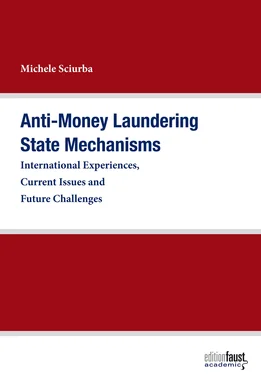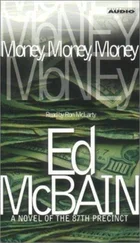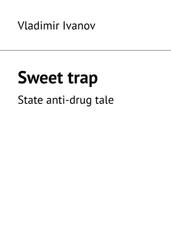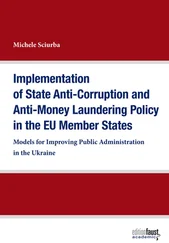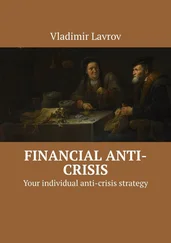Section 314 of the Patriot Act encouraged the exchange of information among investigating authorities and financial institutions with regard to terrorist acts or money laundering activities, lifting any liability of financial institutions and their employees in the event of information disclosure to the authorities. The provisions of section 314 are, therefore, in clear conflict with the provisions of the RTPA 1978 and the Gramm-Leach-Bliley Financial Modernization Act 1999 48. The latter already prohibits the transfer of customer information among financial institutions for marketing reasons. 49The Patriot Act suspends the core provisions of the RTFP 1978 for investigations of US authorities that are concerned with international terrorism. 50Under section 352 of the Patriot Act, the FinCEN is responsible for the exchange of information amongst financial institutions and law enforcement agencies as well as the monitoring of the implementation of AML programs in financial institutions. 51Coupled with the AML/CTF risk-based approach (RBA), these new information requirements for US financial institutions have resulted in an estimated annual cost of USD 10 billions in the US. 52Section 317 of the Patriot Act has provided notably more opportunities to the US courts to freeze and confiscate foreign assets in the US related to AML/CTF offences. The strict requirements of the AML regime in the US apply even to travel agencies due to expansion of the definition of financial institutions in section 318 of the Act. 53By resolution of a US court, section 319 of the Act now allows the US authorities to seize deposits from a foreign bank, if a terrorist has funds on this bank and a correspondent account in the US. 54
I.4.2 Consequences of the New Sanction Regime under the USA Patriot Act: BNP Paribas and Commerzbank
The prevention of the inflow and outflow of proceeds from crime or terrorist financing funds into and out of the US financial system is a central objective of the Patriot Act. Therefore, KYC requirements for financial institutions that must be strictly applied in the form of AML programs are a core area of the Act. 55The Patriot Act’s second core area is the Act’s extraterritorial effect. This area is closely linked to a comprehensive system of sanctions focused on financial institutions and countries that violate US-imposed sanctions. To illustrate the significance of this sanction regime, there are still several US sanction mechanisms in force against Iran, despite the Joint Comprehensive Plan of Action (JCPOA) 56concluded between Iran, China, France, Germany, Russia, the UK and the US on 14 July 2015. Although the US modified its sanctions to put them in line with the JCPOA on 14 January 2016, numerous transactions with Iran are still banned in the US. 57Consequently, transactions involving Iran that are cleared through the US financial system or using a foreign branch of a US financial institution are prohibited in the US. 58
Section 317 of the Patriot Act gives District Courts jurisdiction over any foreign person or financial institution that commits a money laundering violation under US law, if parts or all of the transaction took place in the US, or in other words, if the foreign person or financial institution holds a bank account at a US financial institution. The procedures of the competent authority OFAC against the French BNP Paribas and the German Commerzbank are telling examples of this practice under the Patriot Act, the Code of Federal Regulations (CFR) and the International Emergency Economic Powers Act (IEEPA). In the end, both foreign banks accepted high penalties in the form of settlements despite the fact that they were regulated in Europe, fell under the protection of Regulation (EC) No. 2271/96 59against the extraterritorial effect of third party country legislation, and had not violated any EU law. Yet, the US declared it had jurisdiction on the grounds that the US dollar clearing took place via New York banks. In brief, the US could have frozen funds from BNP Paribas and Commerzbank in the US, imposed further sanctions against the two banks or finally denied them access to the US financial market under the Patriot Act’s provisions.
Very early on, the US worked on establishing US legislation with extraterritorial effect. One of the first pieces of legislation having extraterritorial effect was the Trading with the Enemy Act 1917 60, which gave the US President extensive powers to prohibit any form of trading with the enemies of America, such as North Korea or Cuba. Today, the Patriot Act provides expanded control, monitoring and sanction mechanisms for US authorities and courts to establish extraterritorial jurisdiction. The international financial system strongly depends on the US as a clearing location, as the USD is the lead currency. With this in mind, the OFAC and the Patriot Act have implemented a US-centred control and sanction policy that is repeatedly in conflict with international agreements at the UN and EU levels. As a US reference is often impossible to avoid for international financial institutions, the US authorities de facto force those institutions to agree on settlements to prevent losing access to the US financial market. 61Against this background and the unpredictable nature of the Trump Administration, financial institutions outside the US are currently very cautious and reserved when dealing with Iran, despite the transactions in question being legal within the EU. 62
Above all, the Patriot Act has overridden significant principles of the rule of law. Notably, the Act has given the US investigative authorities, including the US intelligence services, a considerable range of powers, in evident violation of international law. All the more striking is that the International Convention for the Suppression of the Financing of Terrorism 1999 63already comprehensively regulates AML/CTF matters and obligations of financial institutions, such as the KYC requirements and the freezing of assets. Yet, in contrast to the Patriot Act, the relevant UN Conventions are consistent with human rights law and international humanitarian law.
1MJ Anderson and TA Anderson, ‘Anti-Money Laundering: History and Current Developments’ (2015) JIBLR 30(10) 522.
2[1927] 274 U.S. 259.
3R Quedenfeld, ‘Grundlagen der Geldwäschebekämpfung’ in R Quedenfeld (ed), Handbuch: Bekämpfung der Geldwäsche und Wirtschaftskriminalität (4th edn, ESV 2017) 23.
4Bank Secrecy Act of 1970 (BSA) (Pub. L. 91-508).
5EJ Gouvin, ‘Bringing out the Big Guns: the USA PATRIOT ACT, Money Laundering, and the War on Terrorism’ (2003) Baylor L Rev 55, 963.
6Right to Financial Privacy Act of 1978 (RFPA) (Pub. L. 95-630).
7D Cox, Handbook of Anti-Money Laundering (1st edn, Wiley 2014) 15.
8ECOSOC UN Convention against the Illicit Traffic in Narcotic Drugs and Psychotropic Substances (20 December 1988, entered into force 11 November 1990) 1582 UNTS 27627.
9P Alldridge, ‘Money Laundering and Globalization’ (2008) Journal of Law and Society 35(4) 438.
10WH Muller, ‘Anti-Money Laundering – A Short History’ in WH Muller, CH Kalin and JG Goldsworth (eds), Anti-Money Laundering: International Law and Practice (Wiley, Chichester 2007) 6.
11Proceeds of Crime Act 2002 (POCA 2002) (c 29).
12Terrorism Act 2000 (c 11).
13Anti-terrorism, Crime and Security Act 2001 (c 24).
14Directive 2001/97/EC of the European Parliament and of the Council Amending Council Directive 91/308/EEC on Prevention of the Use of the Financial System for the Purpose of Money Laundering (2nd AMLD) [2001] OJ L 344/76.
15EJ Gouvin, ‘Bringing out the Big Guns: the USA PATRIOT ACT, Money Laundering, and the War on Terrorism’ (2003) Baylor L Rev 55, 963.
Читать дальше
